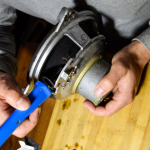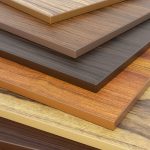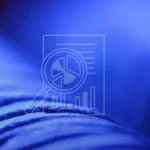Lyocell fiber is able to replicate a variety of textures, including leather, silk, and suede. It is also lightweight, breathable, absorbent, soft, robust, and wrinkle-resistant. These are widely utilized throughout a number of sectors, including the textile, fashion, medical, paper, and pulp industries. The Lyocell fiber’s dry and wet tensile strength is greater than that of other cellulosic staples created by humans. Additionally, Lyocell is one of the best fabrics for sensitive skin because of its smooth fiber surface, which is gentle and supple against the skin. In addition, the fiber’s exceptional resilience and adaptability offer the market for lyocell fiber substantial support.
The American Enka fibers factory first produced lyocell fiber in 1972 as an upgrade to rayon, primarily out of concern for the environment. The fibers facility attempted to market Lyocell unsuccessfully for almost seven years. However, American Enka opted in 1980 to license the patent to two businesses, Courtaulds in the UK and Lenzing in Austria, as the cutting-edge fiber known as Newcell at the time had a lot of potentials. After years of study in advance, it was successfully commercialized in 1990, and in 2000, Lenzing fully licensed what is now known as TENCELTM, the brand name of Lyocell.
The disposable nature of such fabrics coupled with the lack of hazardous solvents used in production offer strong arguments in favor of these fibers. Lyocell fiber is formed of cellulose, which is also known as man-made fiber and is more often known by the brand name “Tencel.” This fiber is a type of recycled cellulose fiber that is made by bleaching wood pulp. In contrast, synthetic fabrics made from petroleum are not biodegradable and their production uses hazardous solvents. Comparing Lyocell fiber to other cellulosic staples, there are a number of advantages. The eco-friendly fabric is entirely biodegradable and offers a number of noteworthy benefits, including an eco-print, highly absorbent fibers that wick away moisture, a smooth and supple surface, and eco-printing.
Overview of Lyocell Fiber Making Process
The first step in producing Lyocell is harvesting wood, which frequently originates from eucalyptus trees. However, you may also frequently find Lyocell produced from birch, oak, and bamboo trees. This wood is reduced to tiny fragments, which are then combined with chemicals to create a wood pulp. Raw cellulose that is liquid and sticky is the end result. By the way, these solvents simply serve to change the form of cellulose; they do not alter the chemical structure of the substance. A solvent called amine oxide is used to break this liquid mixture into small bits once more while it is heated. The cellulose is filtered, and then it undergoes a spinning process to create fibers that are brilliant, long, and thin.
Lyocell is a type of fiber that has natural origins but is manufactured using synthetic materials, fitting somewhere between natural and synthetic fibers. Since Lyocell is frequently referred to as a semi-synthetic fiber or as a processed cellulosic fiber, it may be the right choice for you if you’re seeking vegan alternatives to fully synthetic fibers. This fiber is non-irritating due to its smooth surface, making it ideal for those with sensitive skin or those who just like softer textiles.
Major Factors Making Significant Impact on the Lyocell Fiber Market
The market for lyocell fiber benefits from a number of aspects, such as the material’s simplicity in disposal via sewage digestion, landfilling or burning after use. Furthermore, because lyocell fibers are free of any harmful substances, they are perfect for making medical-grade non-woven products. The widespread application of the material in the textile and clothing industries is what drives the global market for lyocell fiber. This can be related to the strength and effectiveness of their absorption, which is why these are chosen over other fiber kinds, such as cotton and rayon.
Additionally, producers are increasingly turning to lyocell fiber due to the rising need for cellulose fibers that are environmentally friendly and biodegradable. Even superior to cotton, lyocell has a high moisture absorption capacity. It ought to be your first choice if you tend to perspire a lot or have sensitive skin. If you reside in a humid, wet area, the same holds true. Lyocell will benefit your comfort by keeping you dry and giving you a soft-to-the-touch feeling, but it will also save you time and money. You won’t need to sacrifice your time or your budget by choosing Lyocell goods because you won’t need to buy new clothes as regularly.
Some of the Hurdles Negatively Impacting the Lyocell Fiber Market
Lyocell needs special handling when it comes to washing, drying, and ironing because it is a fragile fiber. But relax, it won’t be a big deal. It all comes down to keeping the fiber away from extreme heat. Despite the fact that Lyocell is a very sustainable and environmentally friendly product, it lacks one important component: its high energy consumption. Maintenance expenses may also arise as a result of extra care for sensitive fabrics, such as cold rinsing, hand washing, and dry cleaning. After the first wash, the product shrinks by up to 3%. In the upcoming years, these constraints will limit the demand for lyocell fiber.
Promising Trends Observed in the Lyocell Fiber Market
- The millennial generation, who are said to be the industry’s core audience and whose fluctuating fashion tastes inspire producers to foster innovation, is driving the growth of the lyocell fiber market. Due to the rising need for non-woven fabrics from the medical and automotive industries, lyocell fibers have undergone a spate of recent technological advancements in addition to the fashion industry.
- The main benefit of Lyocell over conventional cotton is that it is far more environmentally friendly than its fluffy counterpart, which is not surprising given that cotton is one of the dirtiest and thirstiest crops in the world. To give you an idea, Lyocell doesn’t need dangerous pesticides or very poisonous chemicals. Normal cotton cannot make the same claim!
- Eco-friendliness is Lyocell’s top advantage. This fiber is created using a closed-loop process, utilizes no pesticides, and uses a lot less water than other natural fibers because it originates from sustainable sources like bamboo pulp and eucalyptus tree wood pulp. It is a compostable, biodegradable, and extremely sustainable fiber as a result of all of this.
- Lyocell is a very breathable material that is effective at absorbing moisture, therefore it is unquestionably ideal for manufacturing active wear. Keeping with its advantages for sports fans. UV protection is a property of some Lyocell variants, like TENCELTM Sun, and the greatest part is its physical protection rather than chemical. This renders it safe for skin and impervious to perspiration.
- Modern technologies and fibers have increased the use of better-quality materials and increased demand for lyocell fiber markers. The usage of fibers that may be recycled and repurposed after a product’s lifecycle has been under the spotlight from brands.
- Don’t be surprised if you see a combination of TENCELTM Lyocell, Modal, organic cotton, and other sustainable fibers in numerous of their clothes as these are some of their favorite materials. The best part about this is that they can give their cardigans, for instance, the specific advantages each fabric has without jeopardizing their environmental commitment.
- Various steps have been implemented by the government to promote sustainable fibers. A significant portion of the product share in North America was made up of the apparels sector. The lyocell fiber market is significantly boosted by the material’s environmentally friendly production process. Social media has had a huge impact on the garment market, which has benefited the sector as a whole.
- One of the main issues of our time is environmental pollution, especially marine contamination. With its rapid fashion business model and rising use of fossil fuels, the fashion industry has a very negative impact on the environment. The most cutting-edge process for making wood fibers is called lyocell manufacturing. It has been successfully used in the industrial setting and is very eco-friendly. The lyocell process’ fundamental tenet is to dissolve and treat the pulp in a closed-loop without using any chemicals.
Regional Dynamics Contributing to the Overall Growth of the Global Lyocell Fiber Market
With a growing textile sector and rising standard of life, Asia Pacific is currently the world’s largest market for lyocell fiber. Global demand for biodegradable cellulose fiber is what is driving the growth of the lyocell fiber market. The demand for the product is rising dramatically worldwide due to growing environmental concerns. Over the course of the forecast period, growth in the lyocell fiber market is anticipated to be driven by rising consumer demand for hygiene goods including baby and adult diapers. Over the projection period, rising consumer spending on hygiene and healthcare items is likely to become the main driver of industry growth. Furthermore, the development of the lyocell fiber market is projected to be aided by rising consumer awareness of the usage of hygiene products worldwide.
U.S. manufacturers created new competitive strategies as garment exports increased. Mexico has a sizable market for textiles. Numerous clothing companies have increased their presence in Mexico, creating demand for their products. Due to the existence of numerous textile factories in Germany, France, and the UK, the demand for lyocell fiber is anticipated to increase in Europe. Less than 1% of the chemicals used actually count as process waste thanks to a novel approach that was created by scientists in their quest for a more efficient process and which utilizes far less water through a closed-loop system. This provides a fabric that, in many aspects, is actually better in quality than other choices and has significant environmental advantages.
Recent Developments and Events Taking Placed Related to Lyocell Fiber Market
The Lenzing Group, the top provider of specialized fibers made from wood in the world, is happy to report the success of its major lyocell expansion project in Thailand. With a nameplate capacity of 100,000 tons annually, the new plant, which is the biggest of its kind in the world, began production on schedule and will help to even better meet the rising customer demand for lyocell fibers bearing the TENCELTM brand. The project is also a significant step for Lenzing toward solidifying its dominance in the lyocell fiber industry and toward a carbon-free future.
The world’s first high-performance, recyclable lyocell material created entirely from cotton textile waste, 100 percent NuCycl r-lyocell, was just introduced, according to textile innovation company Evrnu. This ground-breaking fiber, which uses cotton textile waste as its only raw material, is intended to replace and outperform virgin cellulosic and plastic-based materials, offer significant impact savings, and still be recyclable. Evrnu introduced this material with a high-end T-shirt designed by Carlos Campos that is currently available on CarlosCampos.com and is constructed entirely of NuCycl r-lyocell.
With partners from Switzerland and Austria, Kara Holding, one of the top textile companies in Turkey, will construct a factory with a 400 million euro investment. The business, which will be based in Gaziantep, will produce lyocell fiber, one of the most significant raw materials in the sector. The factory, which will be constructed in the Gaziantep Industrial Zone, will initially have a 20 000 tons annual production capacity. Production will steadily increase to between 40 and 80 thousand tones in the subsequent stages. Tens of thousands of tons of lyocell fibers will be exported to several nations, bringing in an estimated 200 million euros in foreign exchange per year. As a result, the Turkish textile sector, which needs this raw material, will be able to locate cheaper lyocell fibers with an annual production of 10–12 thousand tons.
Rising Presence of Global Leader to Increase Competitiveness in Lyocell Fiber Market
The market for lyocell fiber is extremely competitive due to the prevalence of numerous small and medium-sized businesses. Asian nations have a large number of businesses that can provide lyocell fibers at competitive pricing, which presents substantial difficulties for European and American businesses. Additionally, more new companies are entering the market, which is hurting incumbent merchants’ earnings. Large companies in industrialized nations are therefore concentrating on expanding the range of end-uses, product differentiation, and providing further enhanced lyocell fiber textiles. In recent years, many start-ups are entering the market and emphasized on strengthen their footholds through diverse strategic steps.
The existence of well-known textile manufacturing companies in developing countries like China, India, Bangladesh, and others, together with rising government attempts to boost output volumes, is also expected to fuel market demand. The demand for domestic textiles is anticipated to rise along with the increased purchase of household furnishings like couches and other items. Because of their opulent and distinguished lives, consumers’ preferences for interior decorations and interior designs are predicted to enhance the demand for domestic textiles.
Some of the leading lyocell fiber companies include Baoding Swan Fiber Co. Ltd., Aditya Birla Group, Fiber Technology Co., Ltd., Lenzing A.G., and Qingdao Textiles Group. Many manufacturers have started to transition to eco-conscious fiber due to the rising popularity of sustainable clothes, and the main users of lyocell fabric are Continental Clothing, Lindex Fashion Company, Inditex Clothing Company, Patagonia, Inc., Hennes & Mauritz AB, Fjällräven and C&A, and G-Star Raw.








